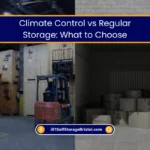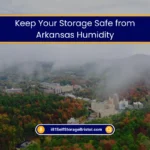Man, that last ride of the season is always bittersweet, isn’t it? You pull the bike back into the garage or ease the RV into its usual spot, and there’s this quiet little sigh. It’s over for now.
So, what’s next? If you’re like I used to be, you probably just chuck a cover on it and promise you’ll deal with it “next weekend.” And then next weekend becomes spring, and you’re staring at a dead battery, a sticky carburetor, and a smell coming from the RV that you really don’t want to investigate.
I’ve been there. I’ve paid the stupid tax. So learn from my mistakes. Taking one proper afternoon now can save you thousands of dollars and a massive headache later. This isn’t a fancy manual; it’s just what actually works.
Getting Your RV Ready for Hibernation (The Right Way)
Forget the complex checklists for a second. Your RV needs three things: to be dry, clean, and stable.
1. Murder the Moisture
This is your absolute number one job. Water is the enemy. If it freezes, it expands and breaks things. If it sits, it grows nasty stuff.
- Empty all the tanks: I mean all of them. Drive it to the dump station one last time. Flush the black tank until the water runs clear. Then drain the grey and fresh water tanks completely. Leave the valves open.
- This is the pro move: Get an inexpensive air compressor attachment for your RV’s water inlet. Blow out the entire water line system. You’ll be shocked at how much water is still lurking in the pipes. This prevents those expensive “I didn’t know that pipe was there!” freeze cracks.
- Pour RV antifreeze down every drain: sinks, shower, toilet. It’s cheap insurance for the P-traps.
2. Evict the Critters Before They Move In
Mice and rats are looking for a winter home, and your RV is a five-star resort. You need to make it deeply unappealing.
- Walk around outside with a roll of steel wool: Stuff it into any hole, gap, or opening you see, especially around pipes and cables. They can’t chew through it.
- Inside, get mean with the smells: They hate peppermint. Soak a bunch of cotton balls in peppermint essential oil and toss them under the sink, in cabinets, in corners. Dryer sheets work too. I scatter them everywhere. It makes the place smell fresh to us, but to a mouse, it’s a “keep out” sign.
- TAKE ALL THE FOOD OUT: Every last cracker, soup can, and spice. Just don’t leave it. Trust me.
3. TLC for the Big Stuff
- Gas Tank: Fill it up. All the way. A full tank leaves less room for air, which means less room for condensation to form and water to get in your fuel. Add a fuel stabilizer and drive it for a few minutes to circulate it.
- Battery: This is the easiest thing to kill. Just disconnect the negative terminal. For a real long winter, pull the battery out entirely and keep it on a trickle charger in your garage.
- Tires: Inflate them to the proper PSI. If you’re storing on dirt or grass, put plywood under them to prevent dry rot. If you can, it’s awesome to take the weight off them with jack stands, but I know that’s not always practical.
Prepping Your Motorcycle: It’s More Than a Cover
Bikes are simpler, but they’re also more sensitive. Neglect hurts them faster.
The Two Biggest Bike Killers: Bad Gas and a Dead Battery
- Gas: For a carbureted bike, bad gas will clog your jets, and you’ll be tearing it apart in the spring. For fuel-injected, it’s not much better. Here’s what you do: Add fuel stabilizer to a full tank of gas. Run the engine for five minutes to get that treated gas everywhere. Then, turn the petcock to “OFF” and run the bike until it dies. This starves the carb of fuel, so there’s nothing in there to gunk up.
- Battery: Just take it out. Seriously. Bring it inside, hook it up to a battery tender. A $40 tender is cheaper than a new $150 battery. Every single time.
The Other Stuff That Matters:
- Lube the Chain: Give it a good cleaning and a heavy coat of chain lube to prevent rust. A rusty chain is a sad sight.
- Get it off the ground: If you have stands, use them. It saves your tires from getting flat spots. If not, just make sure the tires are properly inflated.
- Cover it: Use a real, breathable motorcycle cover. A plastic tarp will trap moisture and sweat on your bike, making everything rust.
The Biggest Decision: Where It All Sits
You can do all this perfect prep, but if your bike is under a leaky tarp in a soggy backyard and your RV is parked under sap-dripping trees, you’re still fighting a losing battle.
This is the part where I tell you what I finally figured out: using a dedicated storage unit was a game-changer for me.
It wasn’t just about the security (though not worrying about theft is huge). It was about the peace of mind. My stuff was out of the sun, away from the rain and snow, and protected from all the elements that are slowly degrading it. I did the work to prep it, and the storage unit protects that investment. It’s the final, crucial step in doing it right.
Think about it. When that first nice day of spring hits, you want to be on the road, not on your knees with a wrench, cussing out a dead battery.
Do the work. Protect your gear. And if you need a dry, secure spot to put it all, you know where to find us. Let’s get you ready for an epic first ride next year.
Now go enjoy your winter, guilt-free. You’ve earned it.













0 Comments